With an increasing influence in habitat conservation, specifically in areas under considerable threat from human encroachment, the David Sheldrick Wildlife Trust (DSWT) has begun monitoring animal populations as a gauge of success.
In the Kibwezi forest, which abuts the Chyulu Hills National Park, many years of human pressure have had a profound effect on the flora and especially fauna of the area. Umani Springs, which issues crystal clear water, filtered through kilometres of volcanic rock in the Chyulu Hills, supports a wide-range of wildlife and vegetation, which in turn has attracted poachers and illegal loggers.
However, with the presence of the David Sheldrick Wildlife Trust in the area, vegetation is beginning to grow back and animals, once chased out by poachers are now returning. Fortunately or unfortunately (depending on how you look at it), animals have a strong memory of danger, and can be difficult to spot during the day. Elephants often become almost exclusively nocturnal when they feel threatened, and will leave signs of their presence long before they appear during the day. So even though teams on the ground are aware that animals are moving back into Kibwezi Forest, many species are rarely seen. Thanks to modern technology, though, DSWT is now able to sight wildlife passively.
Newly acquired camera traps are allowing DSWT to record images of a surprising number and range of animal species for the very first time in Kibwezi forest, revealing a secret world. The cameras are usually triggered during the night, but animals such as baboons and bushbucks, the latter of which has made a dramatic recovery in the last year, are frequently photographed. It has also been exciting for DSWT to recently capture crested guineafowls scratching for insects near the spring. Although now seen quite frequently in huge flocks during the day, they are shy and can be extremely difficult to photograph.

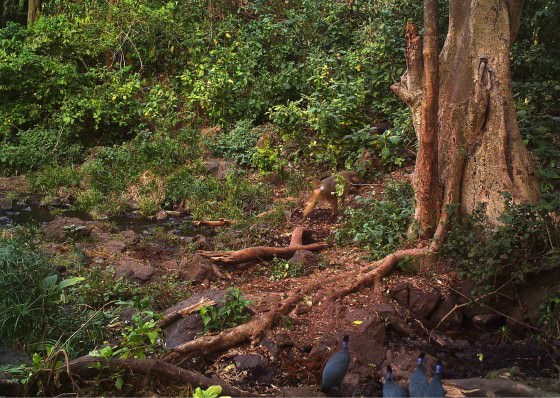
The only antelope to appear on the cameras so far have been bushbucks. Although they were quite difficult to spot on the ground when DSWT first began patrolling this area, they are now fairly commonplace.
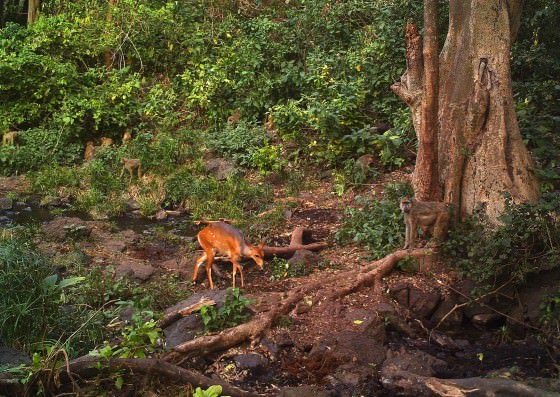
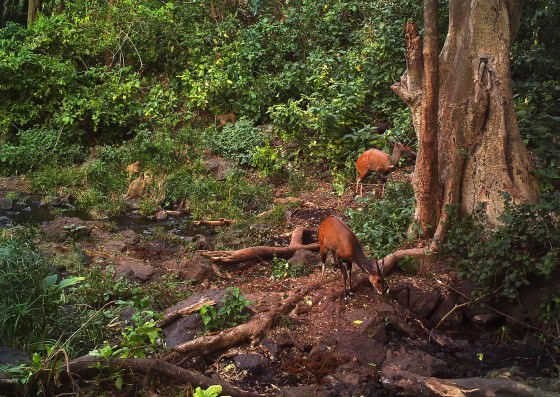
One of the first pictures captured by the camera was this early morning shot of a lone bushbuck approaching the man-made salt lick, which lies in an open flay in front of Umani Lodge.

Elephants are another exciting visitor and can be spotted almost every night on at least one of the cameras.

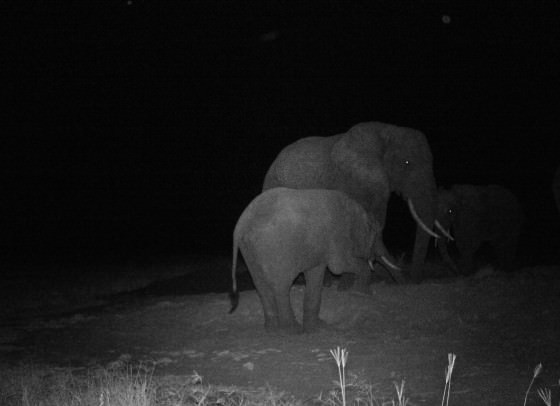
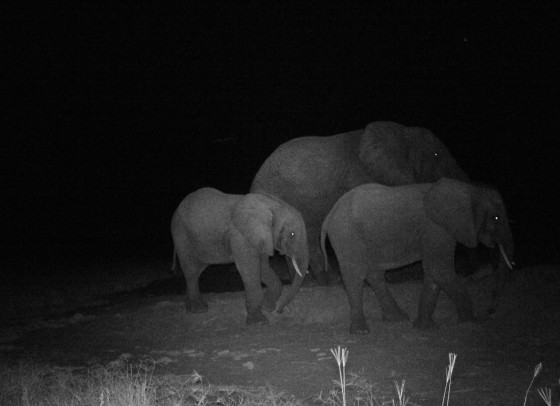
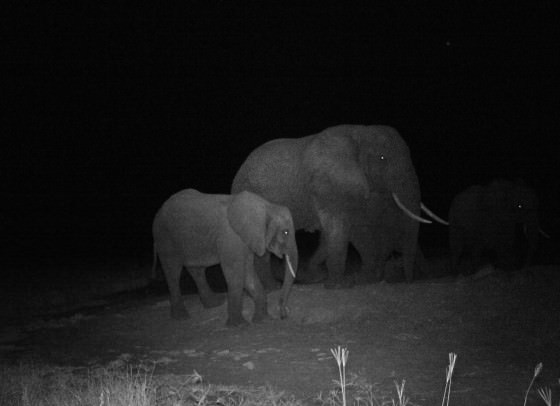
A very encouraging sight is this very large bull elephant who has been seen on more than one occasion at the salt lick.

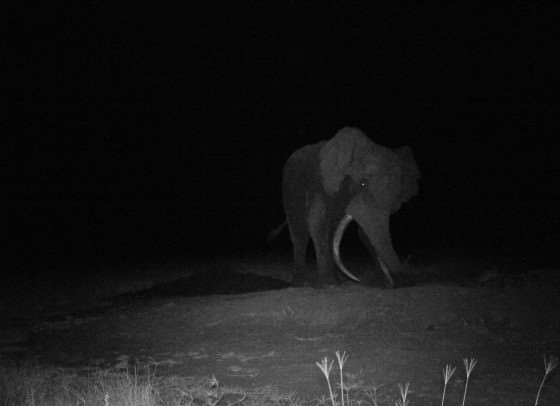
Although elephants usually only appear at night there has been one daytime sighting of a small herd of elephant crossing the busy animal track, which leads to the spring.
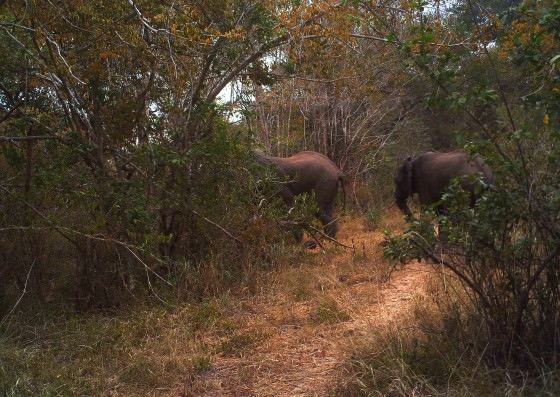
Buffaloes have been spotted on the same track on their way to drink at the springs.
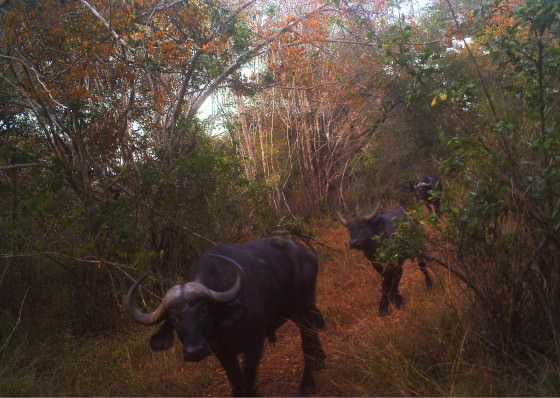
Another member of the big five which has been spotted on several occasions is the leopard. The following series shows a leopard as it crosses in front of the spring camera.
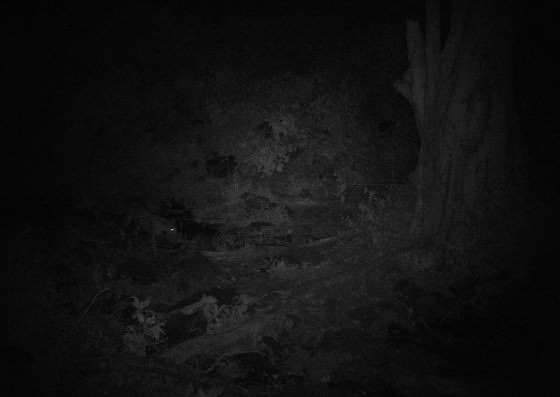

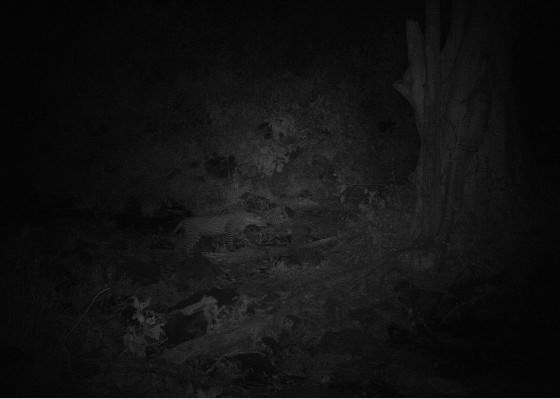
From time to time the cameras will catch quite intimate shots. This elephant may have been using the camera's tree as a scratching post. It is close enough to make out individual veins in its ear.
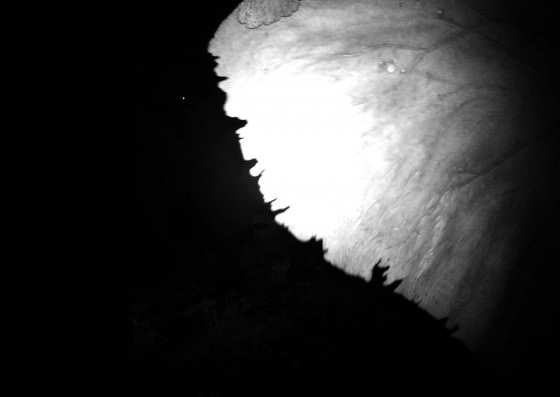
Animals do not usually notice the cameras but one curious baboon did come in for a closer look when the cameras were first installed. It must have been covering the light sensor with its hand as the photo was taken with an infrared flash.
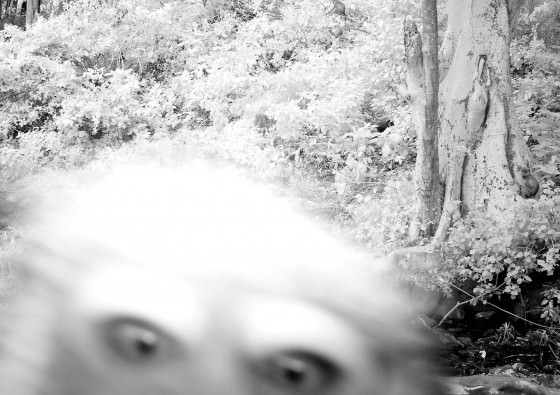
One recent bi-product of the cameras was security related. A group of men was spotted at night collecting water from the spring. They were followed as soon as the pictures were discovered and found to be illegal wood carvers. This is the only evidence of illegal activity captured by the cameras so far, but it is hoped that they might be a useful tool again in the future.
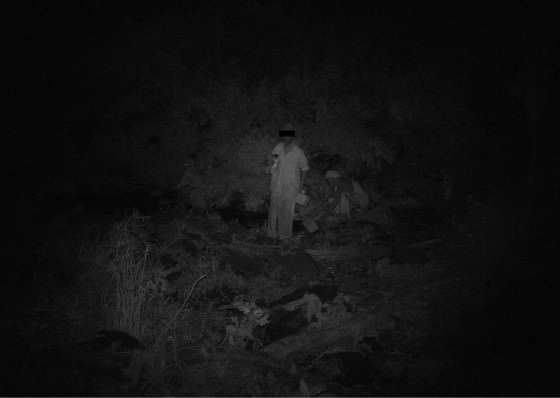
The main objective, however, is to monitor wildlife activity in the forest. Slowly, information will be gathered through these photographs, which will tell a story. The expectation is that with time, a better understanding of the number and movement of animals will be established, and that by studying photographs, individual animals will soon become recognisable through the identification of characteristics such as ear notches on elephants and spotted patterns on leopards.